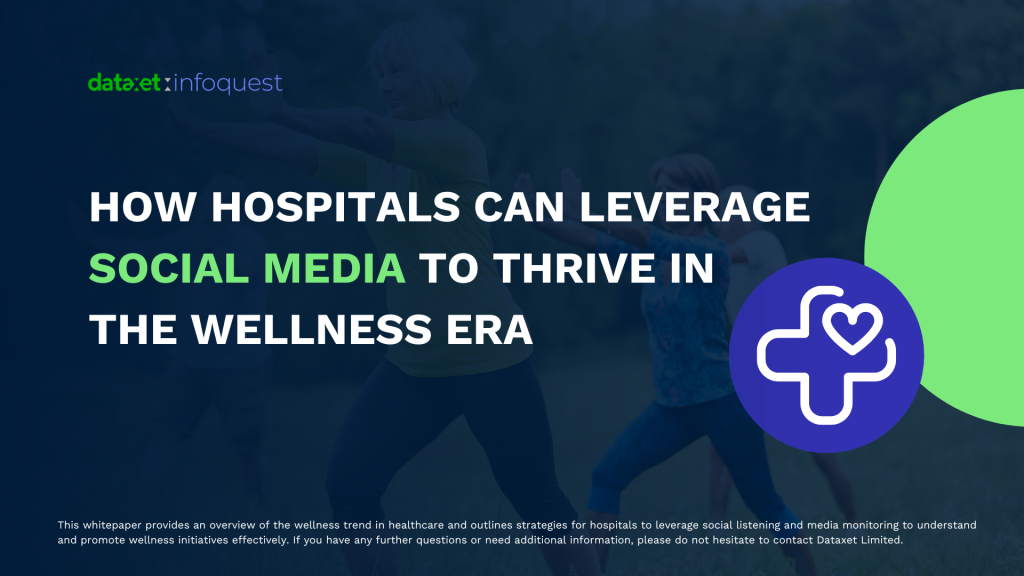
The wellness trend in healthcare represents a paradigm shift from traditional illness-focused care, helping people “live longer” to a more holistic approach that also helps people “live better”.
This shift is driven by growing consumer recognition that well-being goes beyond just the physical to include mental and emotional health.
Despite major investments by healthcare providers to establish a variety of wellness-related initiatives and services, they’re still primarily associated with curative care. They have not yet become the top-of-mind first choice for people seeking ways to live a healthier lifestyle.
We have identified critical "need gaps” and ways that hospitals can leverage social media to engage and influence consumers who are on the wellness-minded journey.
Nearly 80% Chronic diseases that could be prevented by healthy lifestyle behaviors according to Thai Health Promotion Foundation.
400,000 Number of Thais who die from non-communicable diseases per year from eating too much sugar.
Except for a pandemic dip, the global wellness market has been growing steadily. By comparing market value between wellness and hospitals, we can see that wellness opportunities will significantly expand.
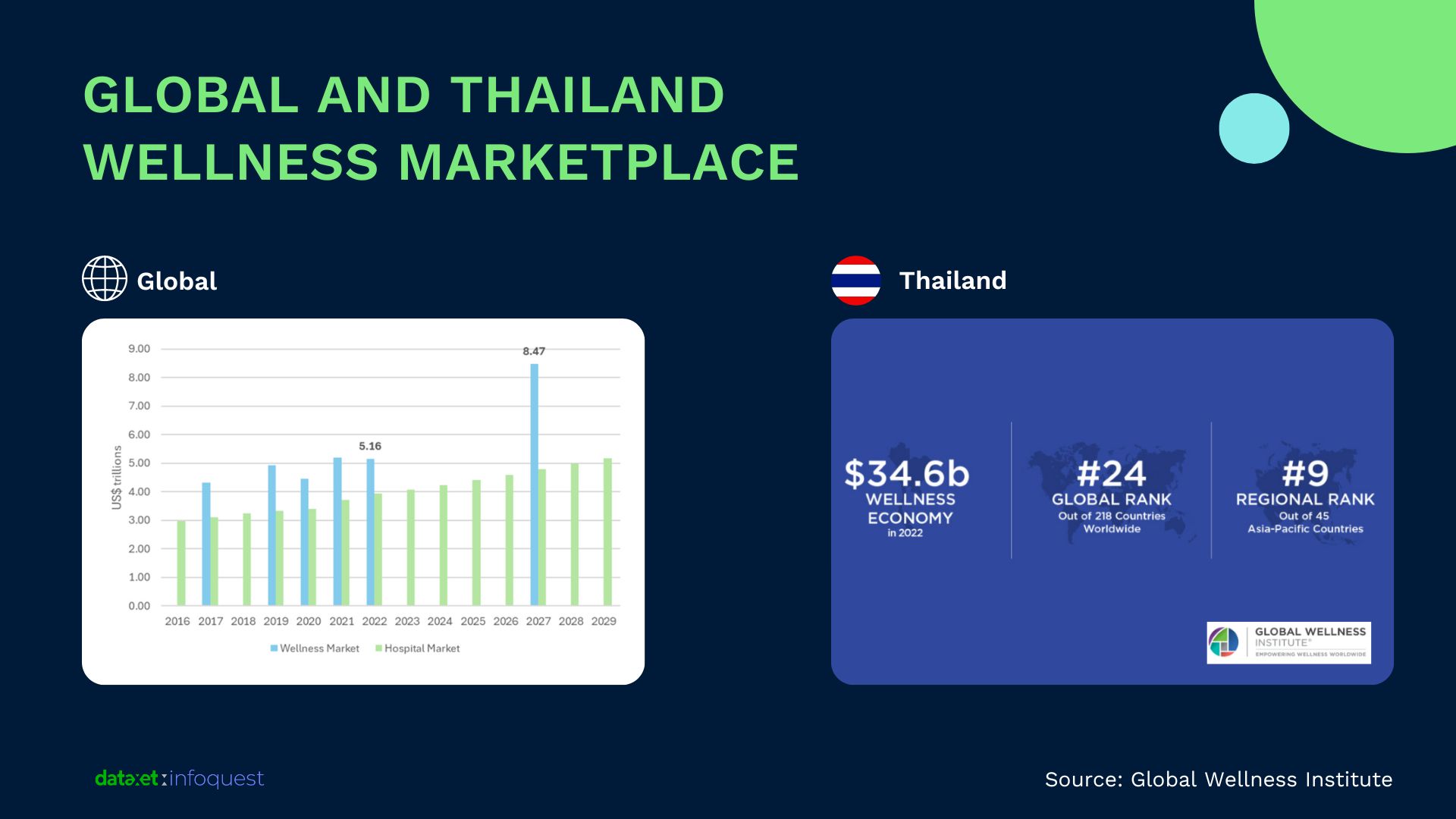
There were a lot of wellness business opportunities in Thailand. MFA trained 400-500 health personnel each year to be well equipped with knowledge and skill. Thailand is ready in every dimension including standard, personnel, location, technology and medical expense.
said Prof. Dr. Wanchai Sirichana, The President of the Council of Mae Fah Luang University (MFA). Source: Kungthep Turakij, Feb 2023
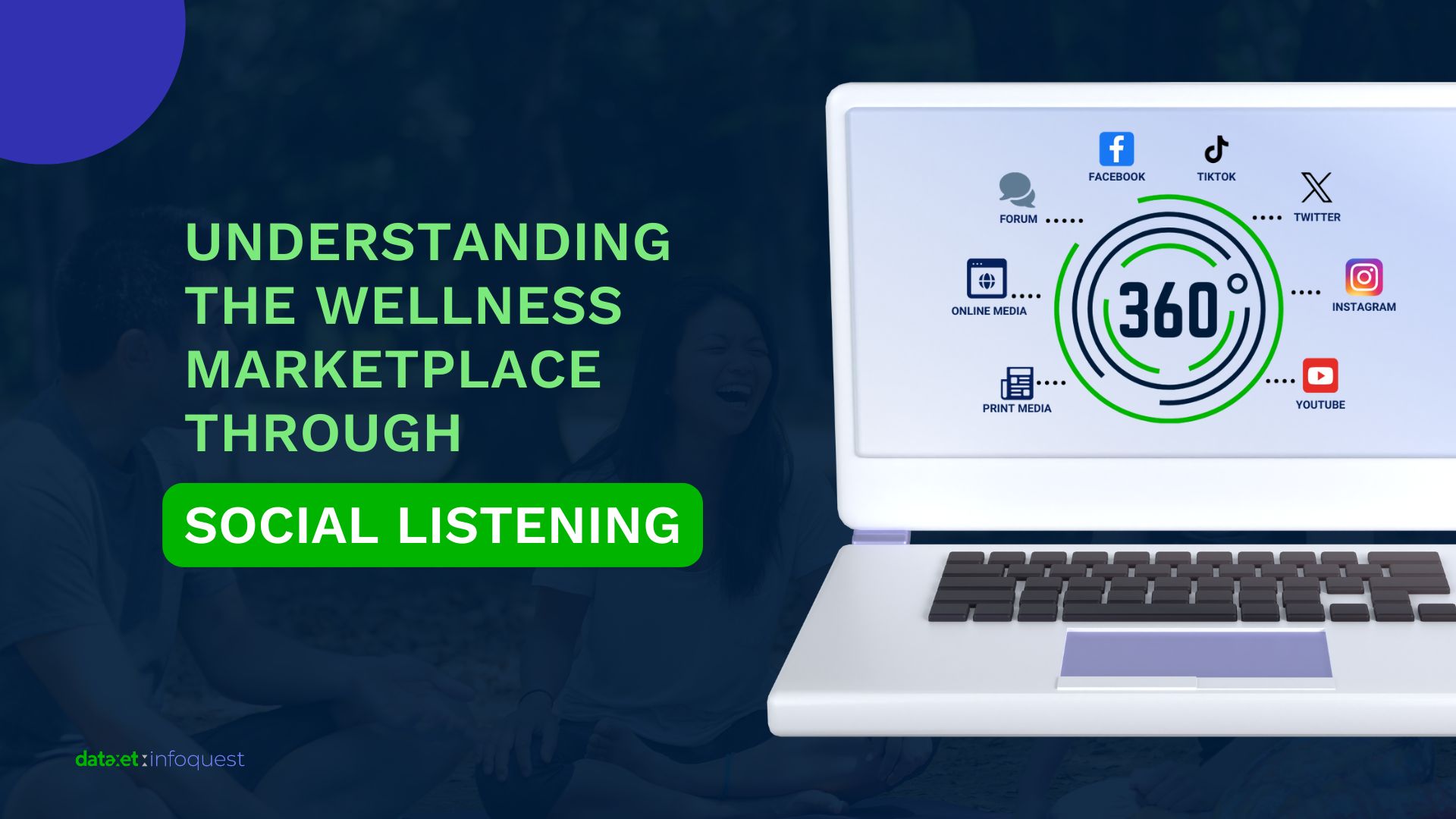
1. Identify patient needs and preferences
Gather real-time feedback from patients and to make wellness products and services more relevant to their needs.
2. Track emerging trends
Stay informed and well adapt communications by monitoring conversations and topics.
3. Understand competitive landscape
Wellness competition goes beyond just other healthcare providers. Understand competitors’ strategies and offerings to identify gaps and differentiation strategies.
4. Improve patient engagement
Build stronger relationships and foster a sense of community with the right message on the right channel.
5. Enhance brand and reputation management
Monitor public sentiment and address negative feedback or misconceptions.
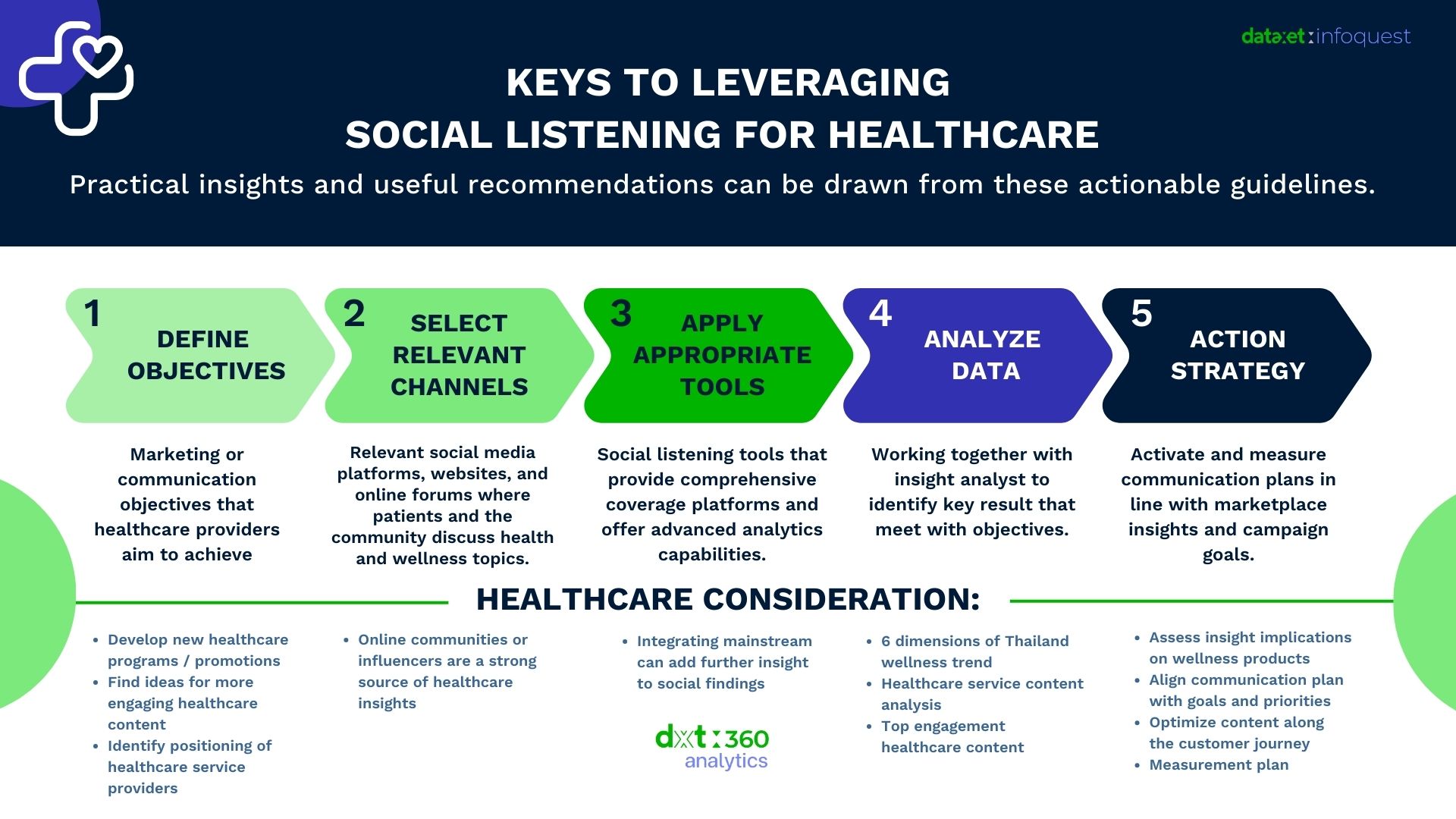
Practical insights and useful recommendations can be drawn from these actionable guidelines.
1. DEFINE Objectives
Marketing or communication objectives that healthcare providers aim to achieve.
Healthcare consideration:
2. SELECT Relevant Channels
Relevant social media platforms, websites, and online forums where patients and the community discuss health and wellness topics.
Healthcare consideration:
3. APPLY Appropriate Tools
Social listening tools that provide comprehensive coverage platforms and offer advanced analytics capabilities.
Healthcare consideration:
4. ANALYZE Data
Working together with insight analyst to identify key result that meet with objectives.
Healthcare consideration:
5. ACTION Strategy
Activate and measure communication plans in line with marketplace insights and campaign goals.
Healthcare consideration:
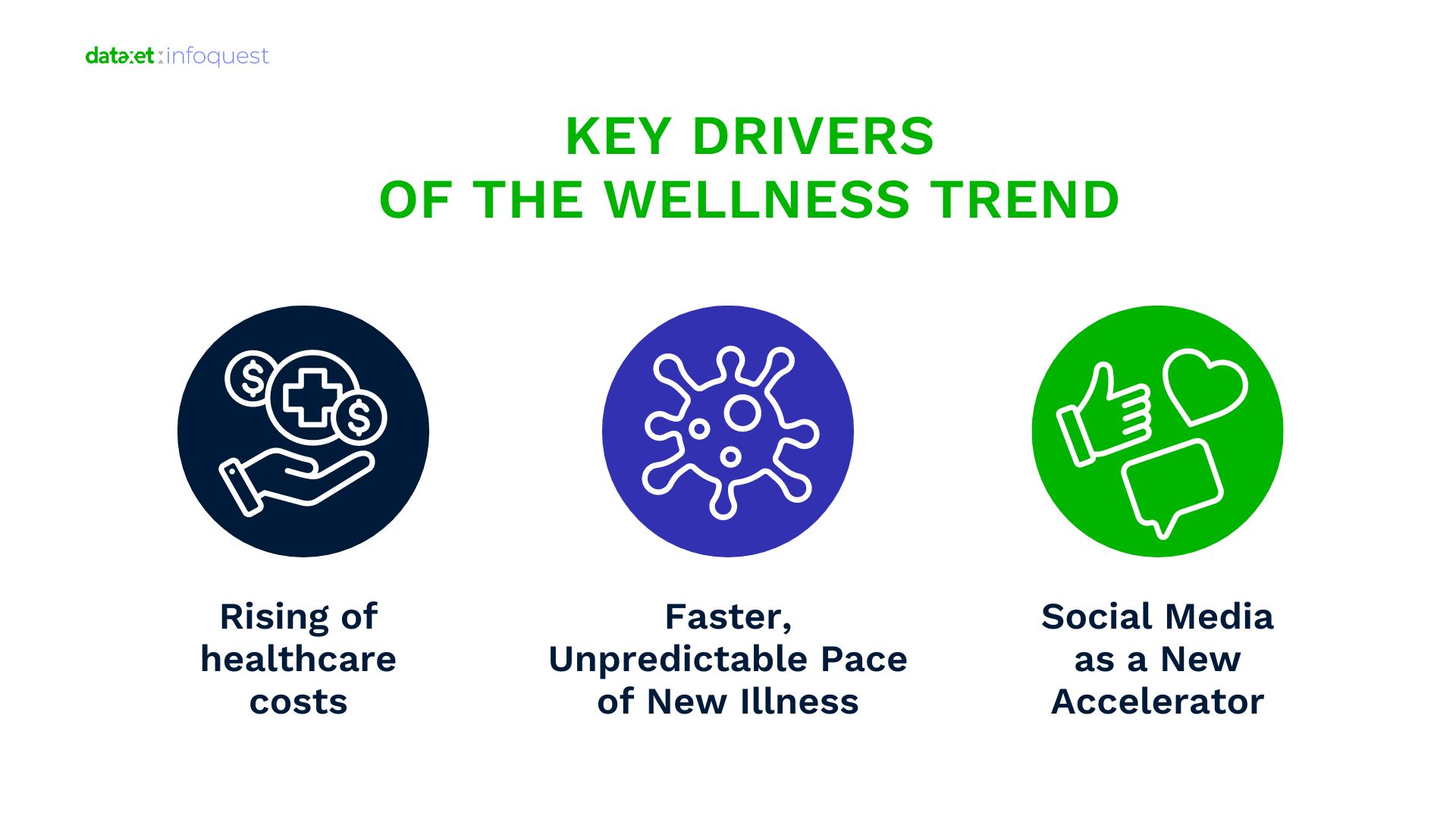
1. RISING HEALTHCARE COSTS
“An ounce of prevention is worth a pound of cure.”
Healthcare cost is soaring due to variety of factors including technology advancements, increase in chronic illness and demand for more targeted or personalized procedures. Moreover, healthcare spending also increases in line with our aging population. Therefore, consumers take holistic wellness into account as a preventative way to avoid and minimize healthcare cost in the future.
2. FASTER, UNPREDICTABLE PACE OF NEW ILLNESSES
‘‘Are we getting weaker, or is the virus is getting stronger?’’
The pandemic led many people to become increasingly conscious of their health. Although COVID-19 has become our normal, new variants and long COVID effects has people feeling that they’re getting sick easier and recovering more slowly. Given the uncertainty, people are pursuing healthier lifestyles to provide a stronger foundation against whatever illnesses might arise.
3. SOCIAL MEDIA AS A MOVEMENT ACCELERATOR
‘‘Social media make wellness more accessible and tangible.’’
Social media has not only become a crucial source of timely information but also an accelerator driving the wellness trend. This is because wellness touches on many aspects of our daily lives. So, besides a constant flow of wellness-related trends, social algorithms also tailor content to the specific interests and needs of individuals.
Consumers view wellness through a much broader and more sophisticated lens, encompassing not just fitness and nutrition but also overall physical, mental health and appearance.
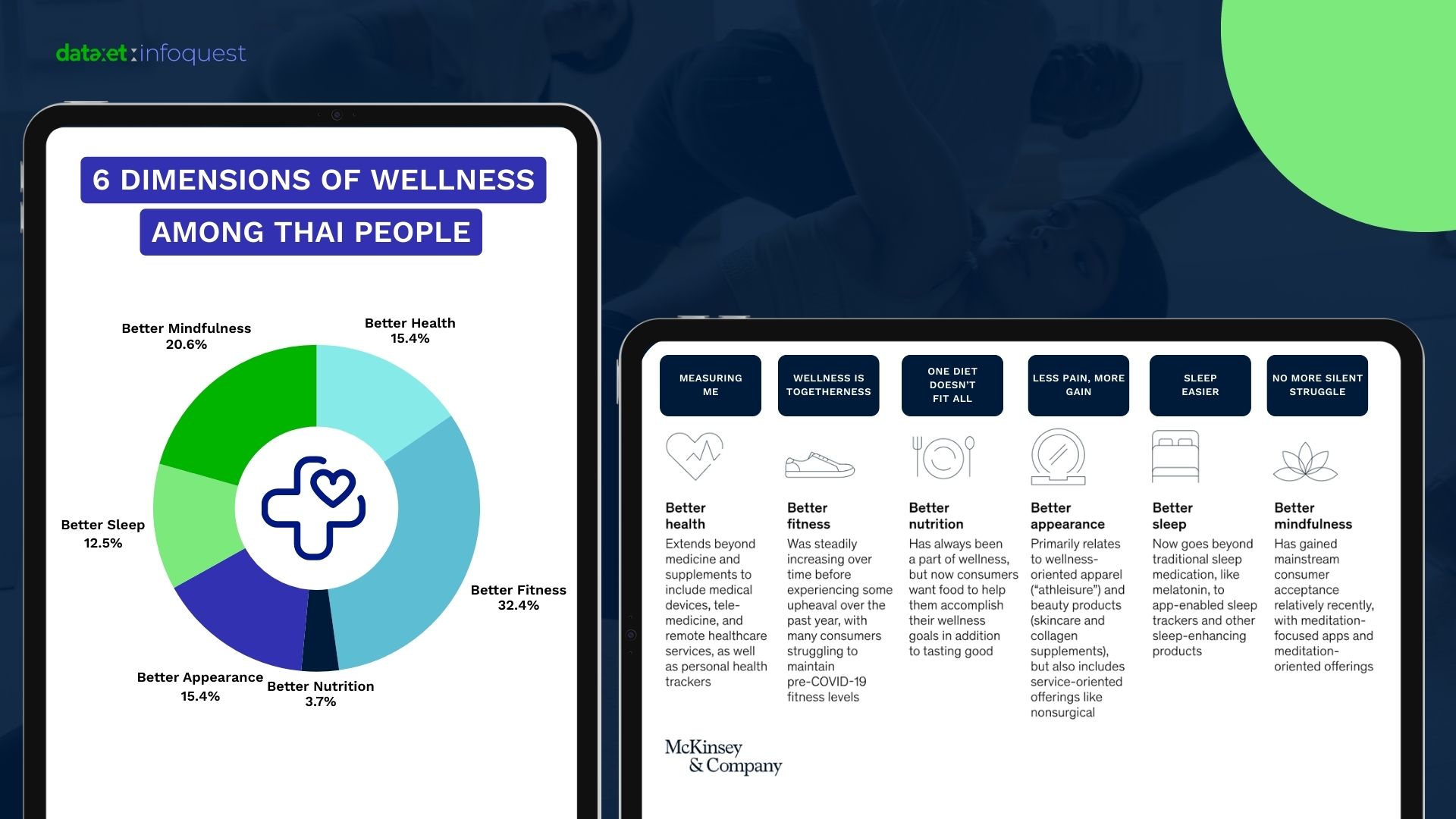

Innovations in digital health technologies, such as wearable devices and mobile health applications, are enabling consumers to proactively manage their health. Consumers are more than ready to embrace new health innovation, especially tracking devices because it’s real time, personal and their accomplishments can be quantified and shared.
By leveraging personal health tracking data, healthcare providers can personalize solutions that address consumers unique needs and preferences. Collaborate with consumers to achieve personal goals. Medical personnel will be able to have more accurate analysis and bring about more customized solutions for each consumer.
Nowadays fitness settings go well beyond the traditional gym and gym equipment. Social media role models and communities have popularized abundant ways to stay active. The communal nature of social has made wellness more fun, interesting and accessible.
Community based initiatives pave the way to build trust and engagement. Brands can give consumers space where they feel they belong to. Ignite their participation by continuedly inject relevant vibrant activities to the community.
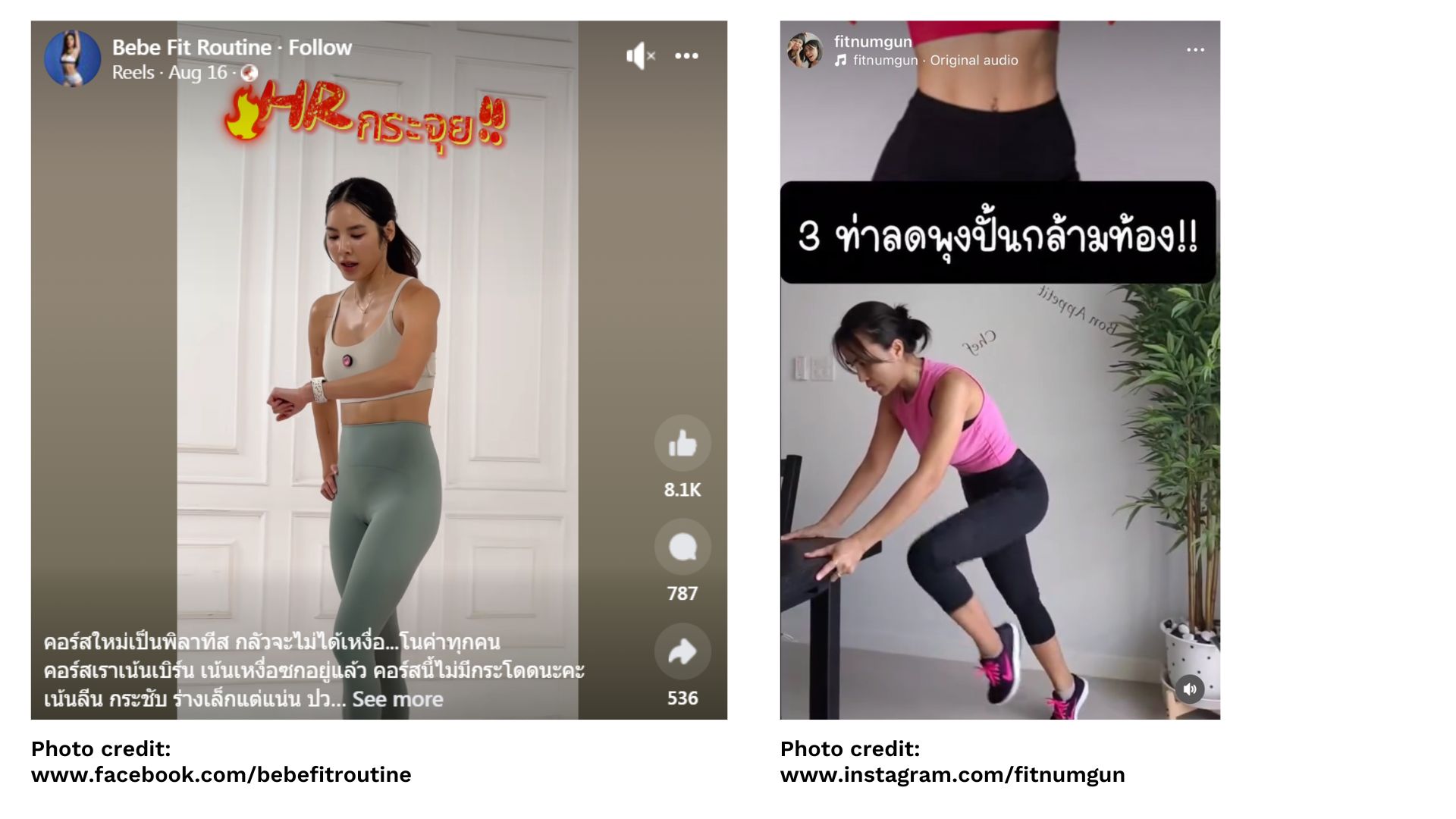
Social has shifted the nutrition perspective from “what’s the right thing to do” to “what’s the right thing for me”.
Traditional formulas like low carb, high protein and sugar free are giving way to approaches that fit with people’s circumstances and personal goals.
Healthcare providers can leverage patient and social data to become a stronger advocate for better nutrition. By recognizing the variety of personal goals and preferences people have, they can engage more effectively across everyday touchpoints.

Non-surgical beauty is redefining traditional procedures because its convenient, less painful and closer to instant gratification. Interestingly that when it comes to ‘appearance’, beauty clinics gain higher awareness and trust among consumers.
Healthcare providers can be thought of as more than just a surgical option. Feature services that are “quicker fixes” to help position your offering more accessible to a broader range of customers.

According from Ministry of Public Health, there are around 19 million Thai people sleeping less than 6 hours per day. Rather than hospitals, insomniacs try to fix their sleep problem through seeking alternative tips from social media and influencers.
‘Sleep Economy’ is a sleeper awaited to be tapped into. It is about time that healthcare providers fulfill the millions of people dreams through variety of innovative products, cross-category partnerships and creative knowledge content.
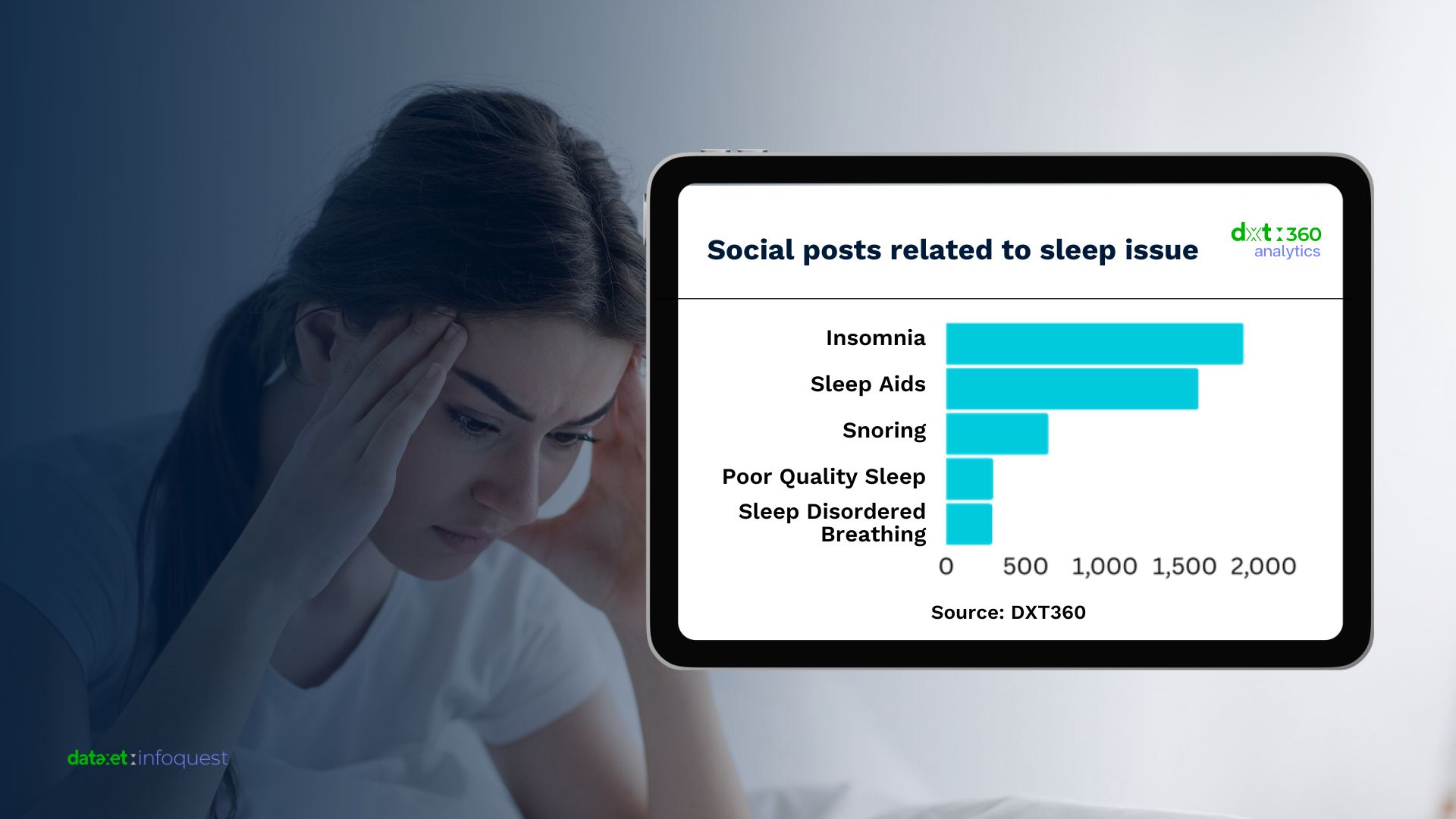
In the past, patients with mental illness or who were struggling with life issues were defined with negative perceptions. Today, the stigma is decreasing, making it more socially acceptable to seek someone for help.
Since mental and emotional health are vital at every stage of life. The door is wider for healthcare providers to offer professional support. Wellness position can be broader not only for cure but a safe zone for consumers whenever they need.

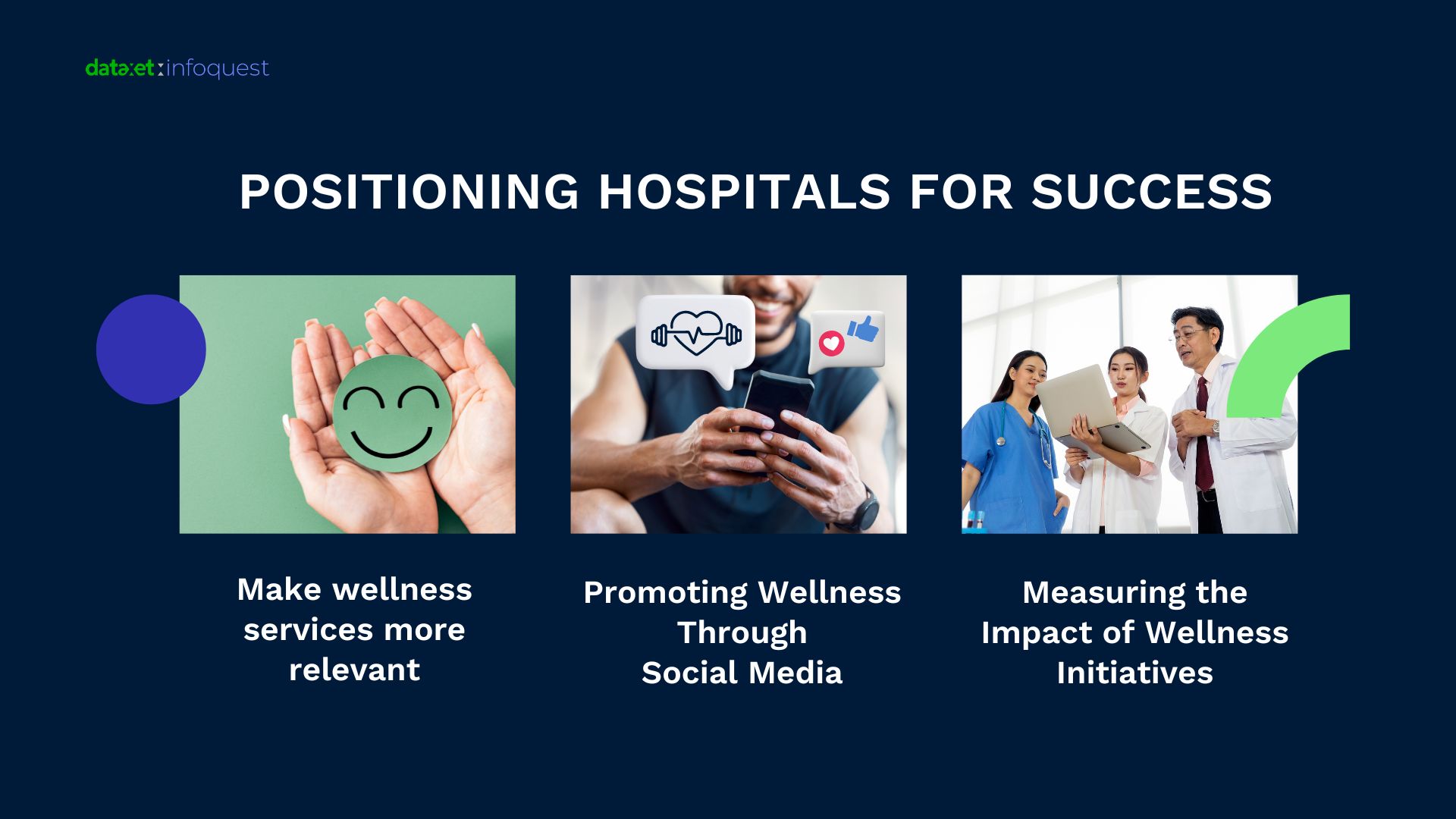
1) Make wellness services more relevant:
Leveraging insights gained through social listening, hospitals can re-evaluate how current offerings address customer preferences and expectations.
In some cases, it’s about modifying current services to make them more competitive with options that thrive across social channels.
There are also opportunities to develop new services that expand the appeal of hospitals to a broader market.
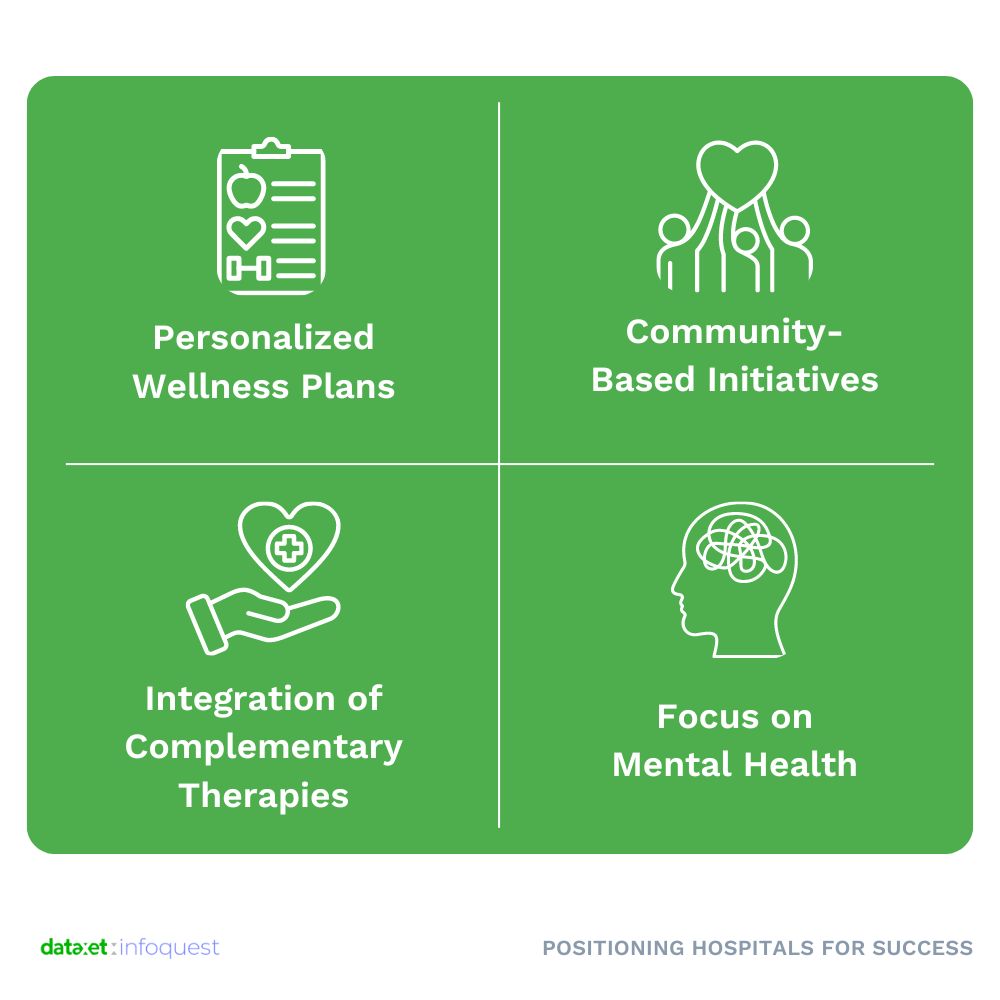
2) Promoting Wellness Through Social Media:
Hospitals currently have a “perception gap” which limits their appeal to who are wellness versus curative focused.
The Wellness marketplace is highly competitive with a wide variety of strategic and tactical approaches. But there are four main drivers of successful communications in this market.
Our analysis shows that high engagement, high impact social wellness content is:
– Personal
– Immediacy
– Accessible
– Community
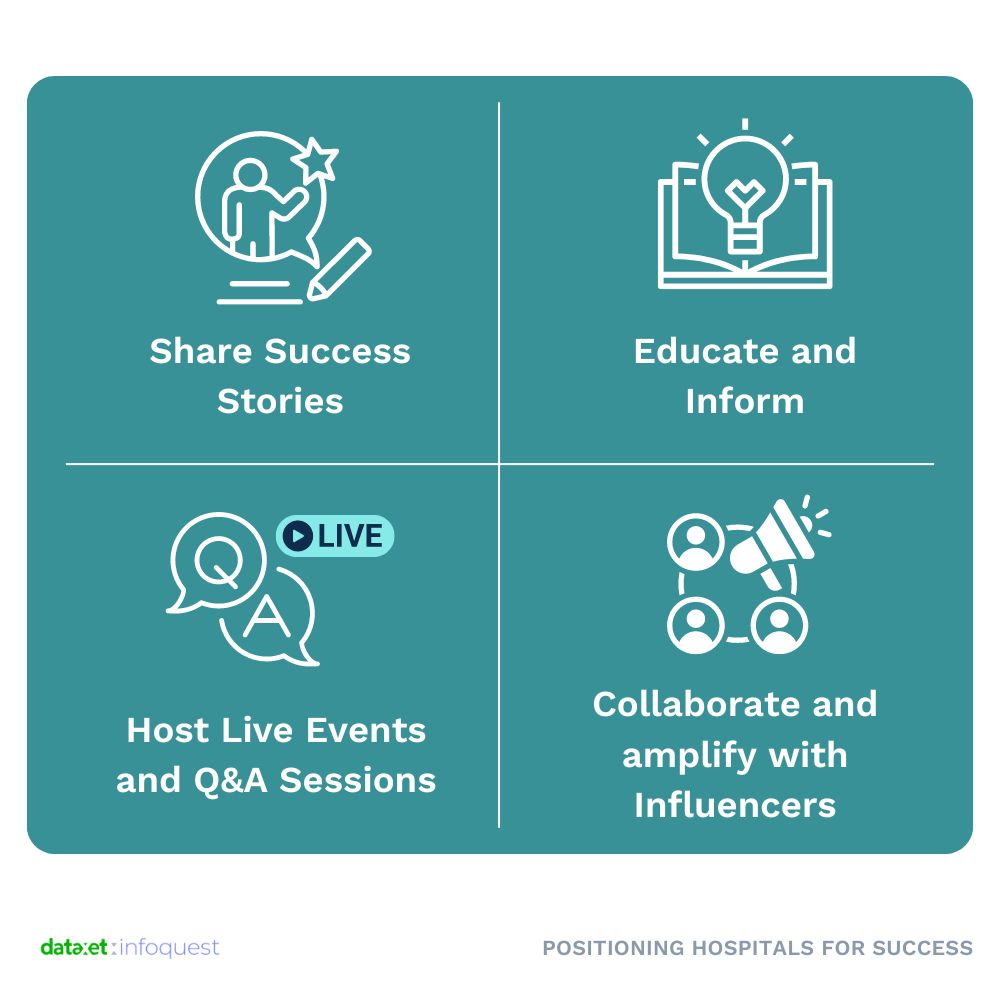
Powerful social content invites people to participate:
It’s important to leverage the strengths and energy of the social medium.
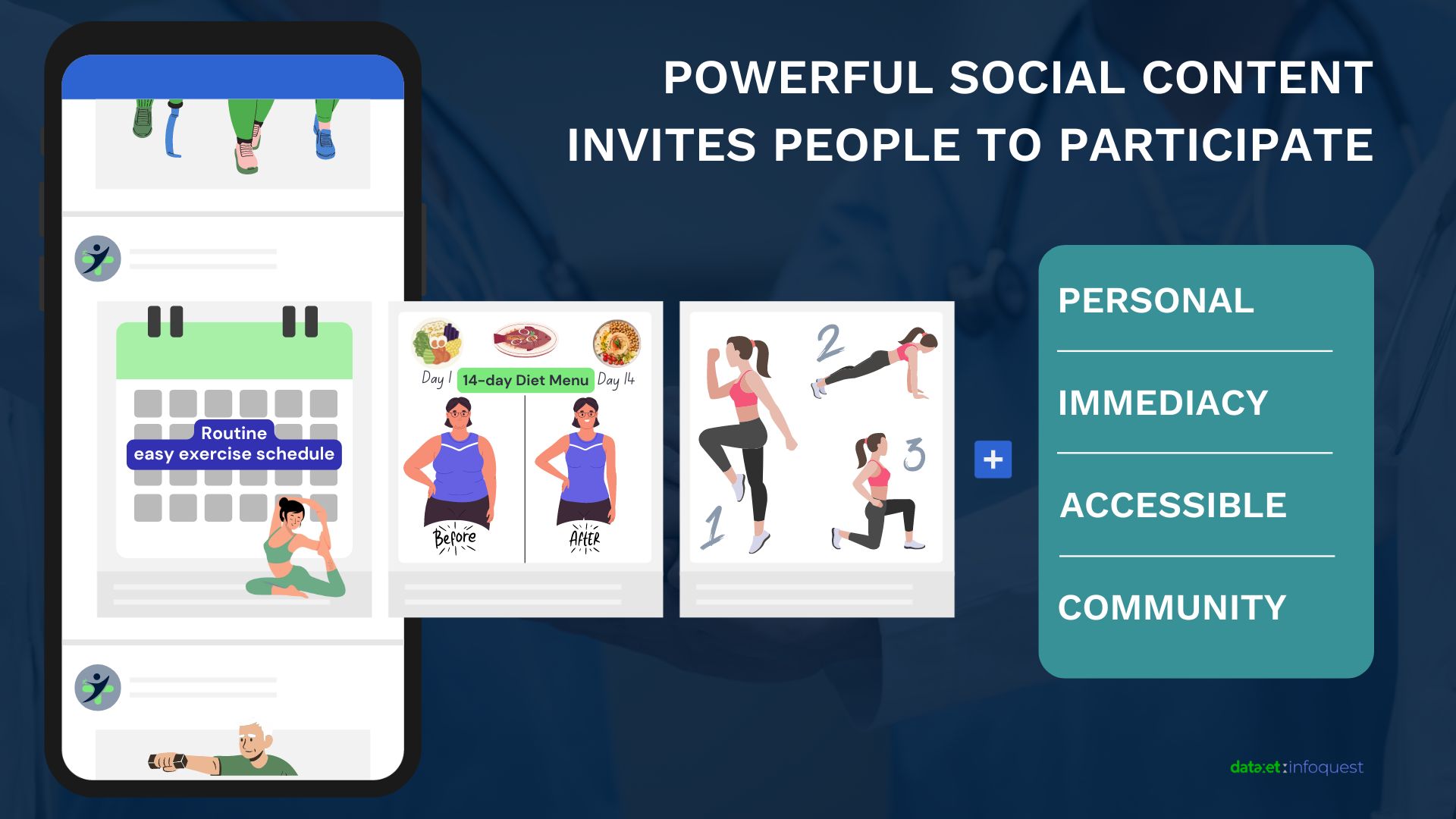
Hospital content can do more to fill the “Perception Gap”
While content is on-brand, it doesn’t leverage the key attributes that make social content engaging.
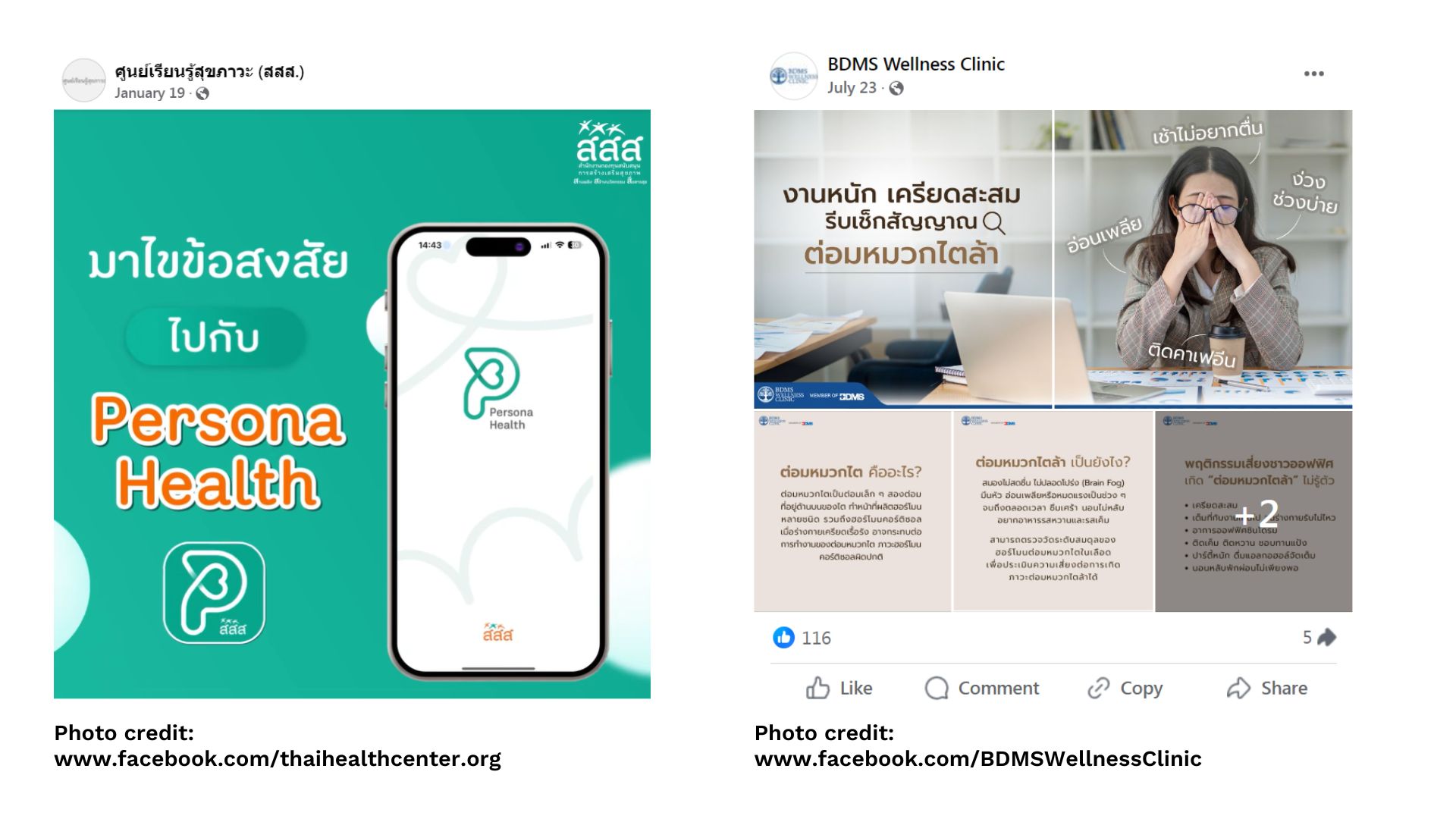
3) Measuring the Impact of Wellness Initiatives
Align KPI and performance metrics with campaign goals to keep monitoring and measure the effectiveness of the initiatives that brands introduce. Further insights to continually develop future campaigns.
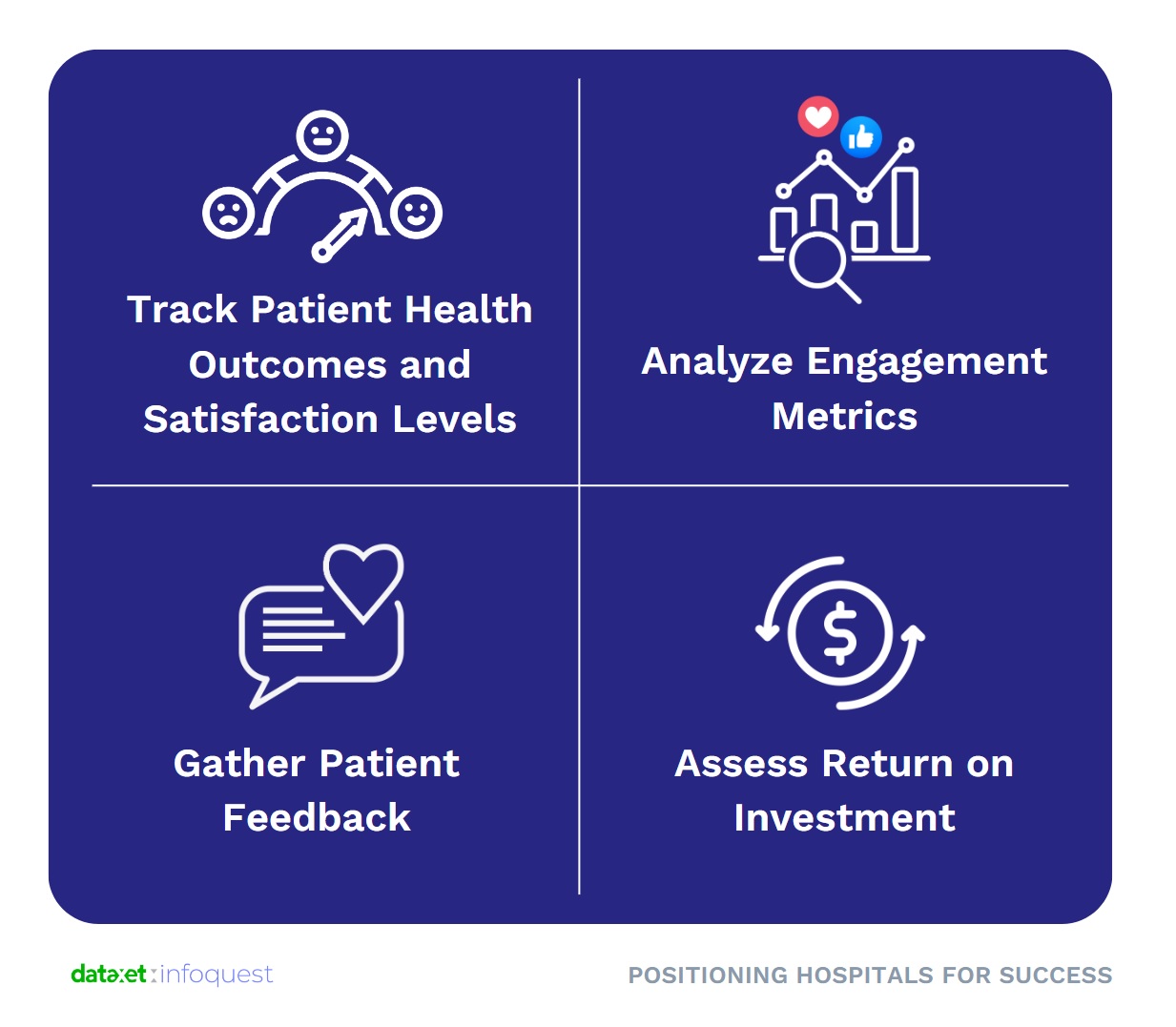
The wellness trend in healthcare presents a significant opportunity for hospitals to expand their role as providers of holistic health solutions. They have already made significant investments in wellness-related products and services,
but there’s still work to do to shift people’s perceptions to become a go-to first-stop wellness resource.
By leveraging social listening and media monitoring tools, hospitals can gain valuable insights into the wellness marketplace. These insights can help them 1) refine and target programs that meet patient needs and preferences and 2) influence how people view and consider hospitals as their partner in this journey.
In many ways, the wellness market is shaped in social and online media. This trend is continuing to grow, driven by key wellness drivers like community, personalization, social proof and accessibility.
Through effective positioning and promotion of wellness offerings, hospitals can enhance patient engagement, improve health outcomes, and strengthen their reputation as leaders in health and wellness. By embracing the wellness trend and leveraging data-driven insights, hospitals can transform the way they deliver and position care.
After all, shouldn’t hospitals be top-of-mind as the place where people can go to not only live longer, but live better.
This whitepaper provides an overview of the wellness trend in healthcare and outlines strategies for hospitals to leverage social listening and media monitoring to understand and promote wellness initiatives effectively. If you have any further questions or need additional information, please do not hesitate to contact us.